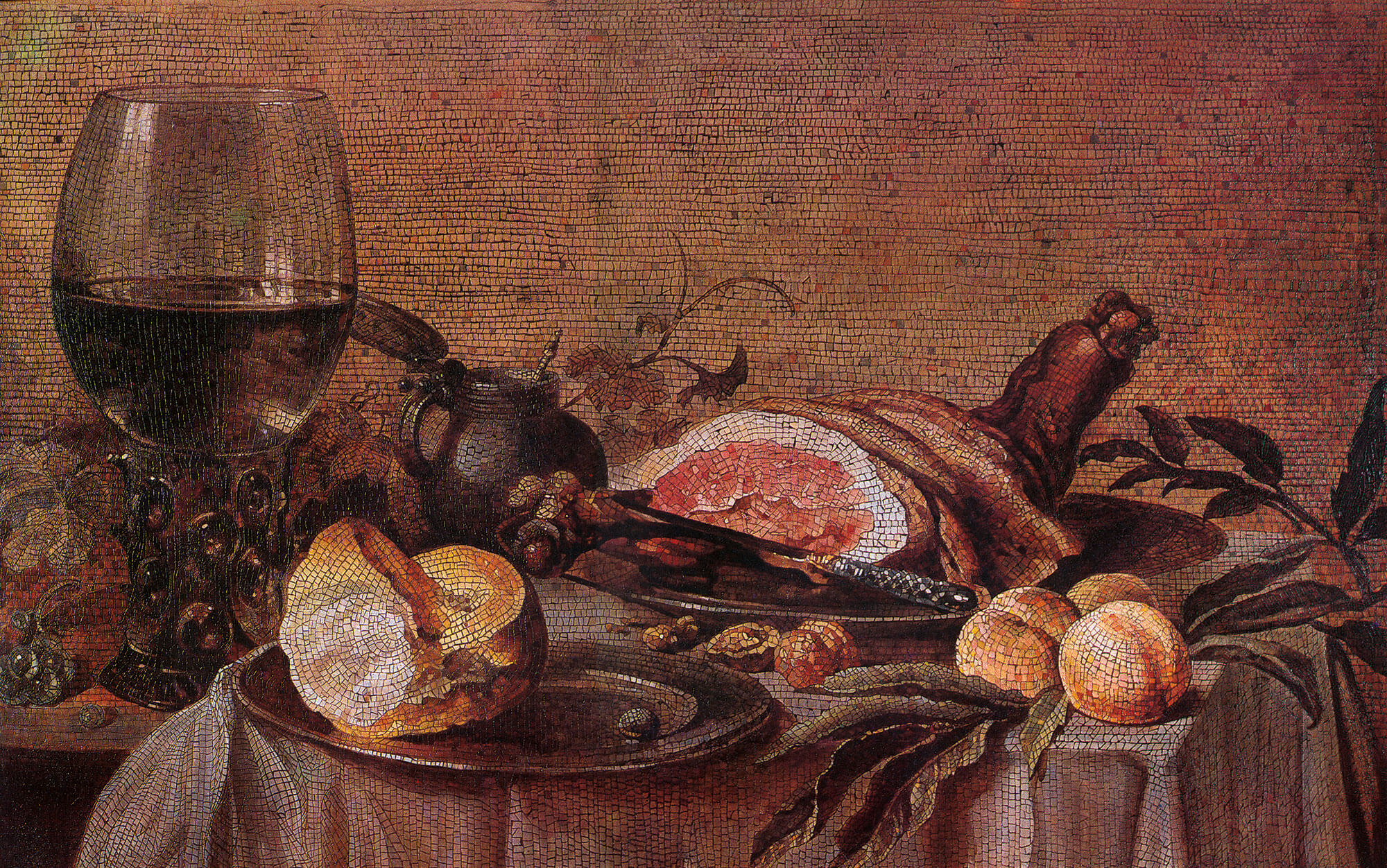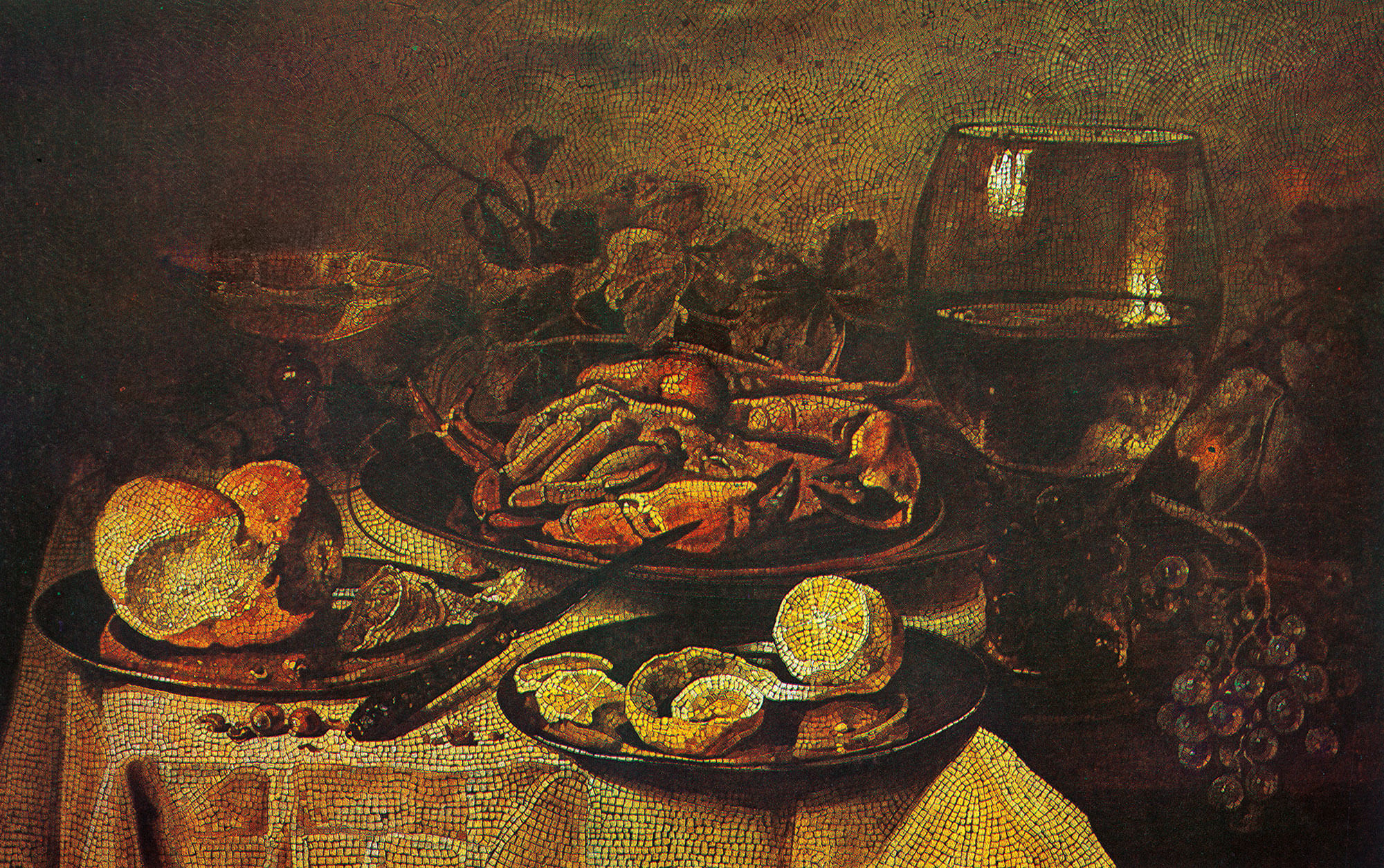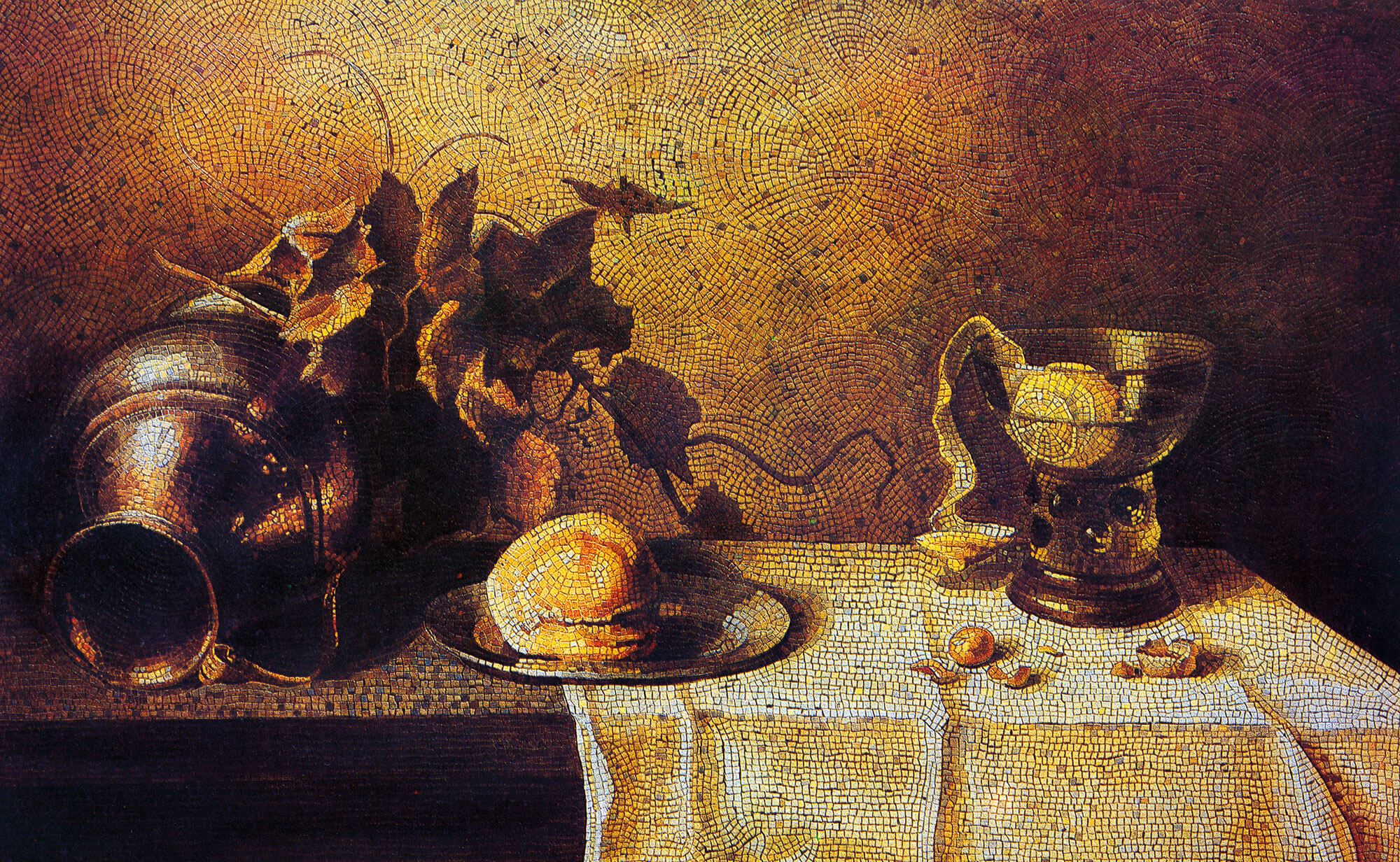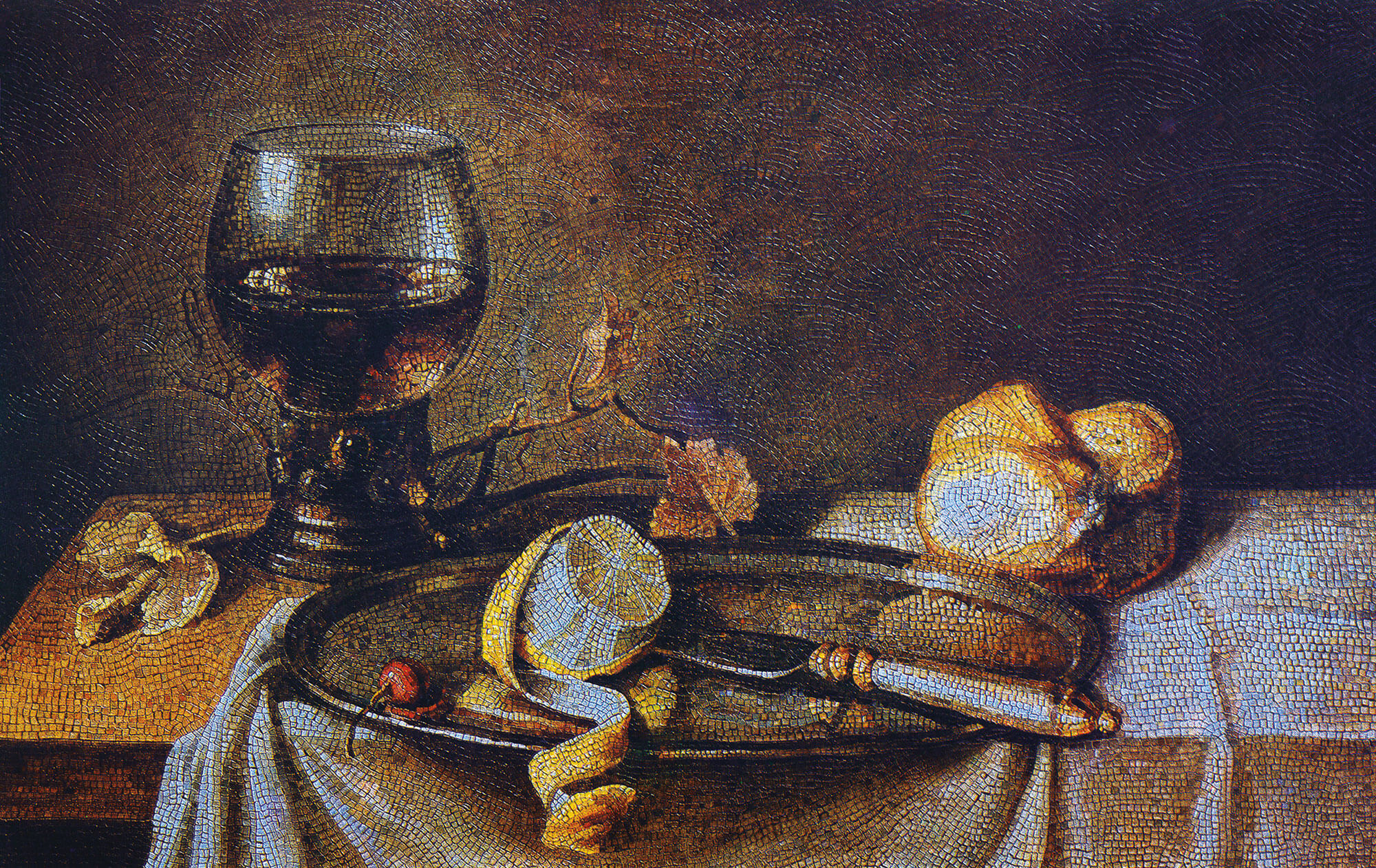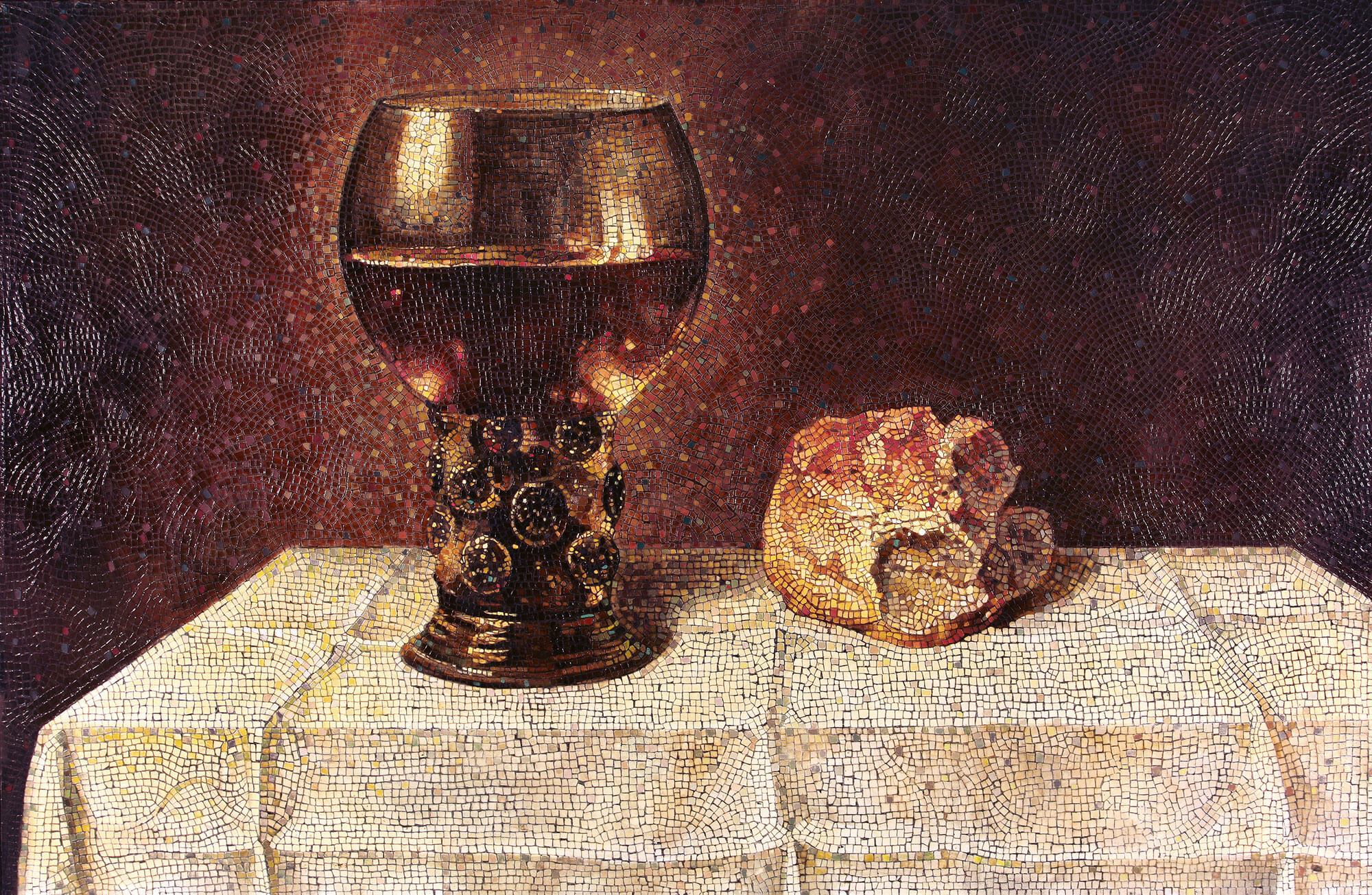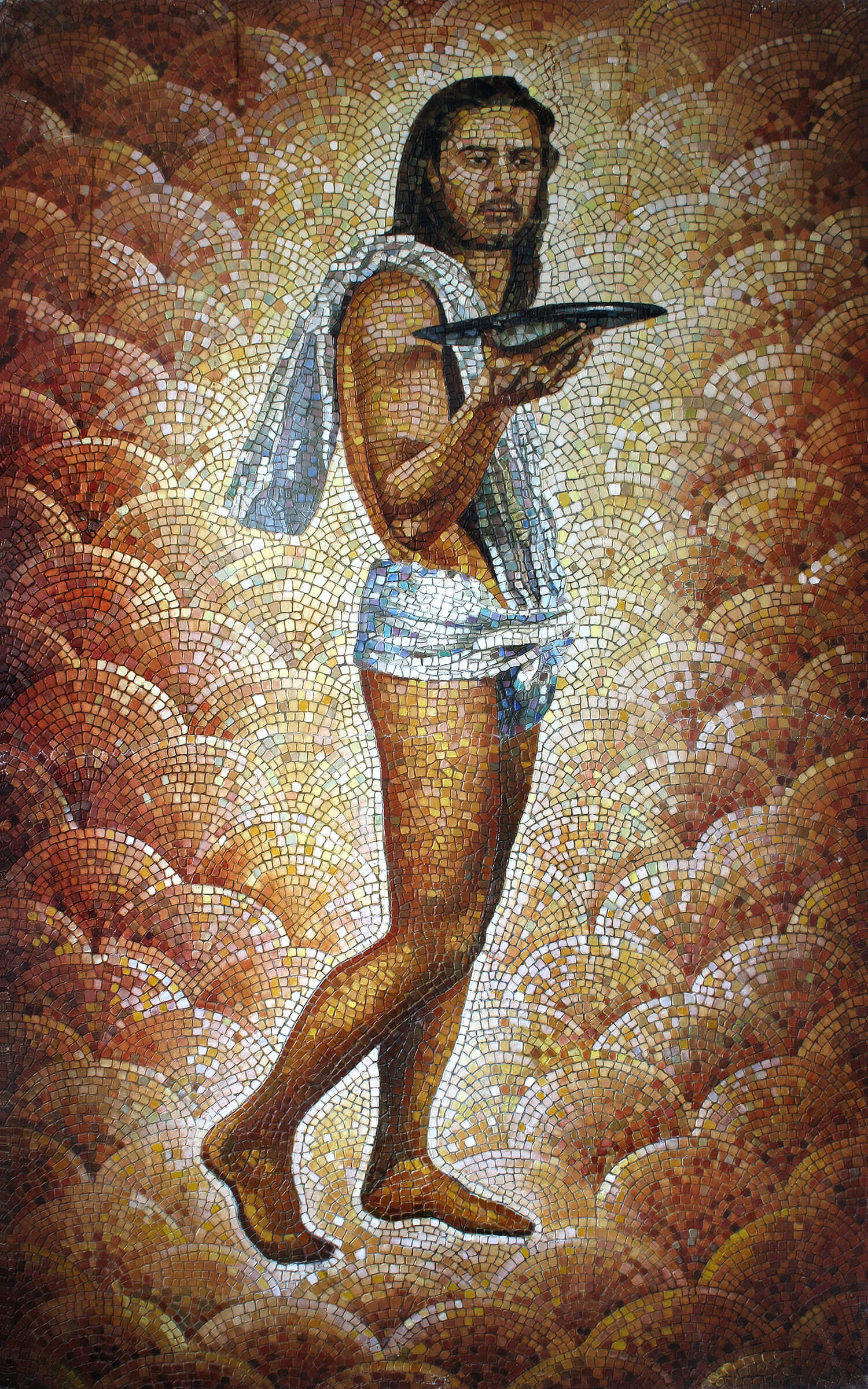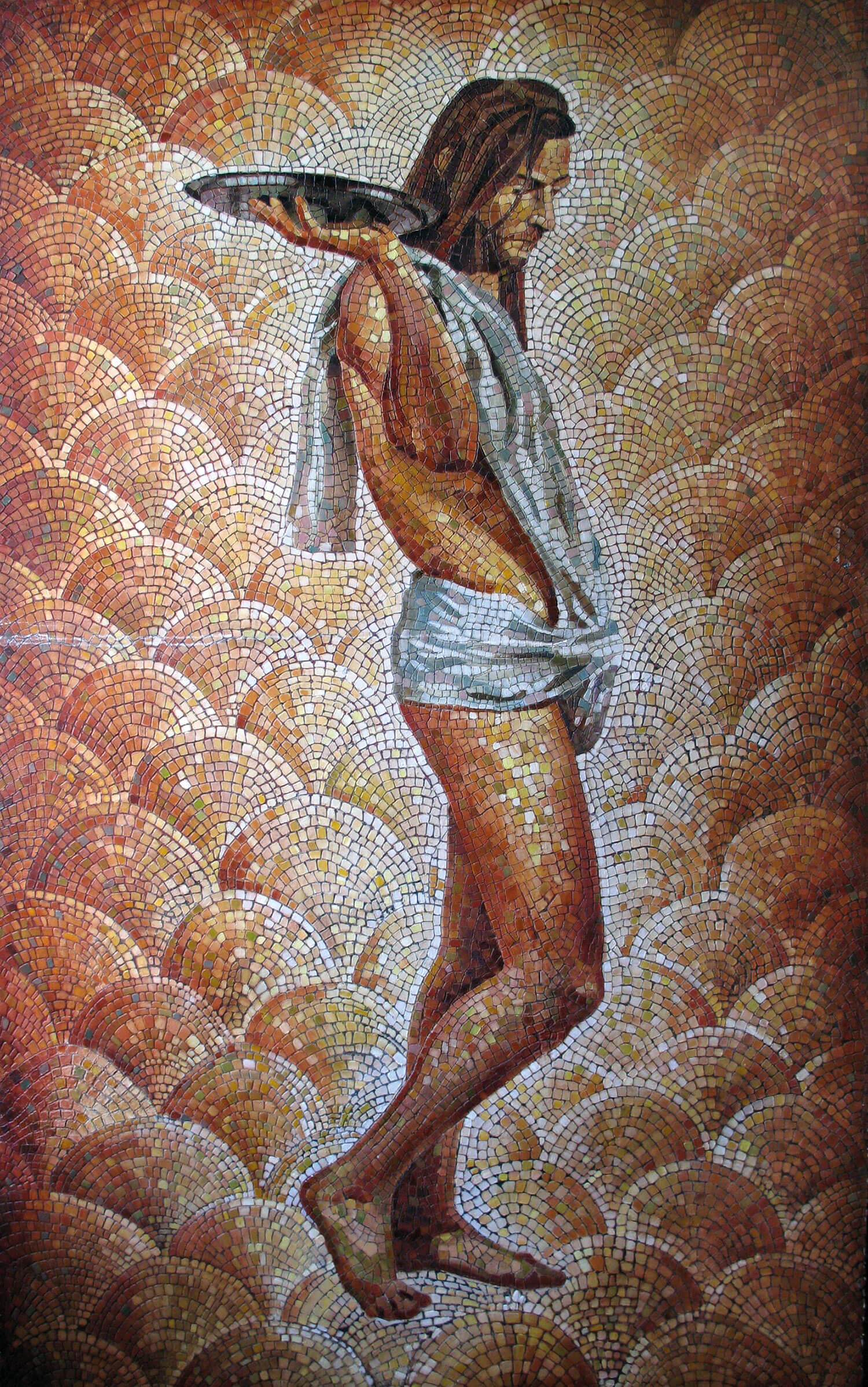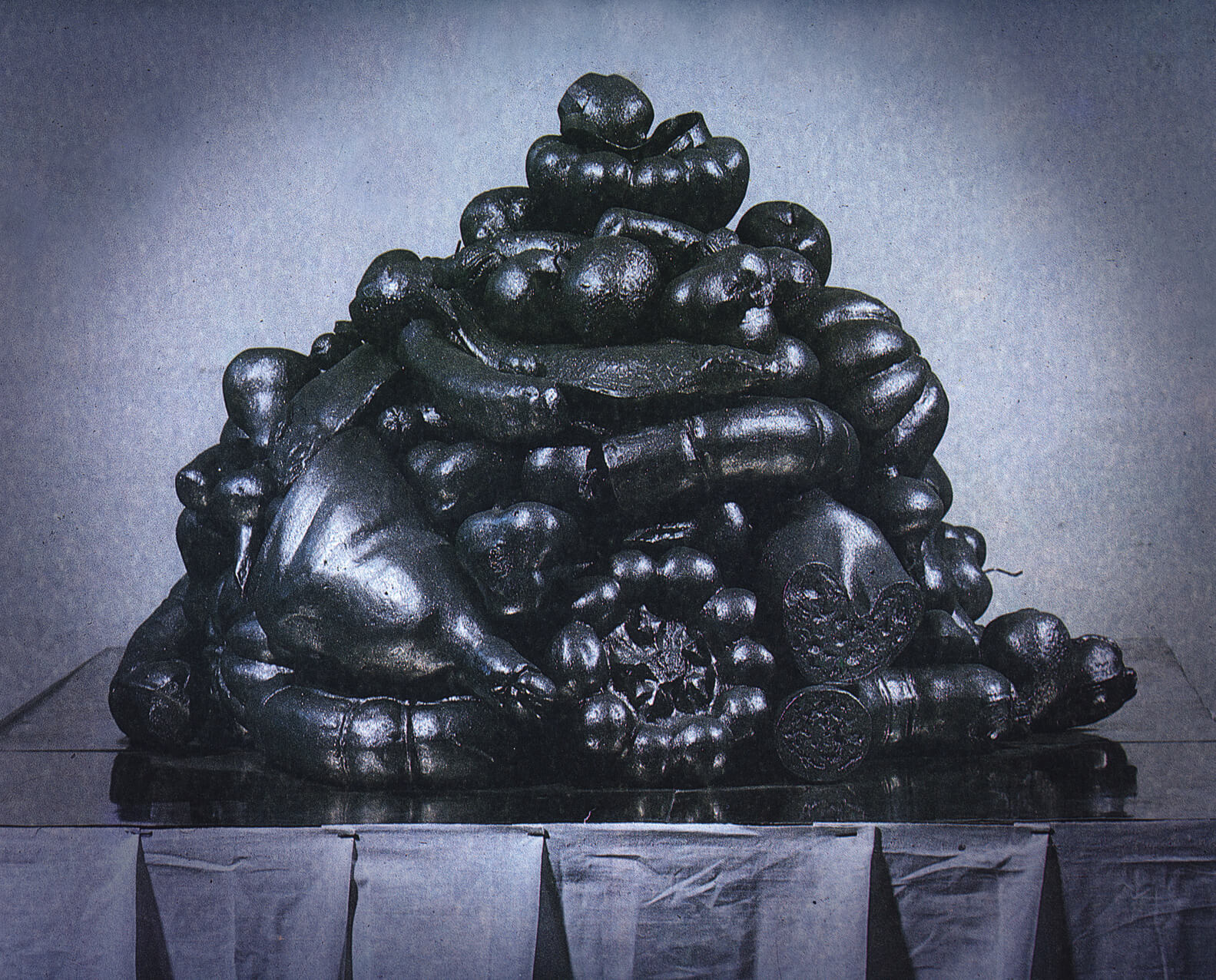COMMUNION
OBLATION
There was an idea to “cook a meal” using the Lesser Dutchmen style still-life paintings, cutting it into pieces and by that creating a completely new product, different from the original. The main work of this project is a cook with a knife in his hands, who raises pasta up above himself to cut it in half.
Oblation – is a small part that wants to be involved in the great whole, to feel one flowing unit with it. To appear inside oneself. A part cannot become the whole or see it – a piece of smalt does not see the picture it sits in.
OBLATION
Looking through the artworks reproducing still-life in the Lesser Dutchmen stylistics in an enlarged size created using a Roman mosaic made of smalt, it would be interesting to know what lies under this, which universal paradigms can hide behind such concepts as Roman mosaics and Dutch still-life; why these two concepts are combined in such a pure, unbreakable connection, since the works are very holistic, as if they were created just like they are. The first thing that attracts our attention is the connection of the mosaic with a special kind of vision, it almost imitates the sight of insects.
Initiation “dives” inside the mystery; comprehension, on the other hand, looks more like a finale: you comprehended something and that is the end. And the initiation is the beginning of the journey into the unknown. Thus, everything begins with initiation. It is impossible to comprehend the transubstantiation, but it is possible to be initiated. Who is the hostage of the mystery? What makes him the only one dedicated?
That is Jesus Christ. While eating his flesh and blood, he demonstrates the transubstantiation, the sacrament is occurring, fastened by the feast. If you translate all this into the artworks, presented to us, then you will see the sacrament being fastened with this still-lifing.
The still-life hides the mosaic underneath, or vice versa, the mosaic hides the still-life. The transubstantiation takes place right before our eyes, but, most importantly, does not become a third wheel, Jesus remains being Jesus, and food remains being food. In this case, mosaic and food are still what they are. This refers to the Roman luxury: Roman villas were decorated with mosaic, the Lesser Dutchmen still-life – is a symbol of abundance and prosperity, because Rome and Holland were the first trading republics. The other side of luxury is always a war. If one can imagine the last battle of gods and demons, then that is the death of them all. What will remain? At dawn, the sun rises and brings light on a field full of corpses. This is the end of the story. The dawn on the war field, the sun, shining on the set table in front. If we compare this with the preparation of the feast, we will see that food is divided to different groups, and the warriors that chop each other – are just the instruments of the supreme leaders, just meat, which is chopped for the fun of the gods. The food appears, in this case, as the army, which, apparently, is engaged in their conflicts, but, in fact, is the tool for preparing the feast. The secret purpose of the battle is that dawn situation, that battlefield, looking like a set table.
